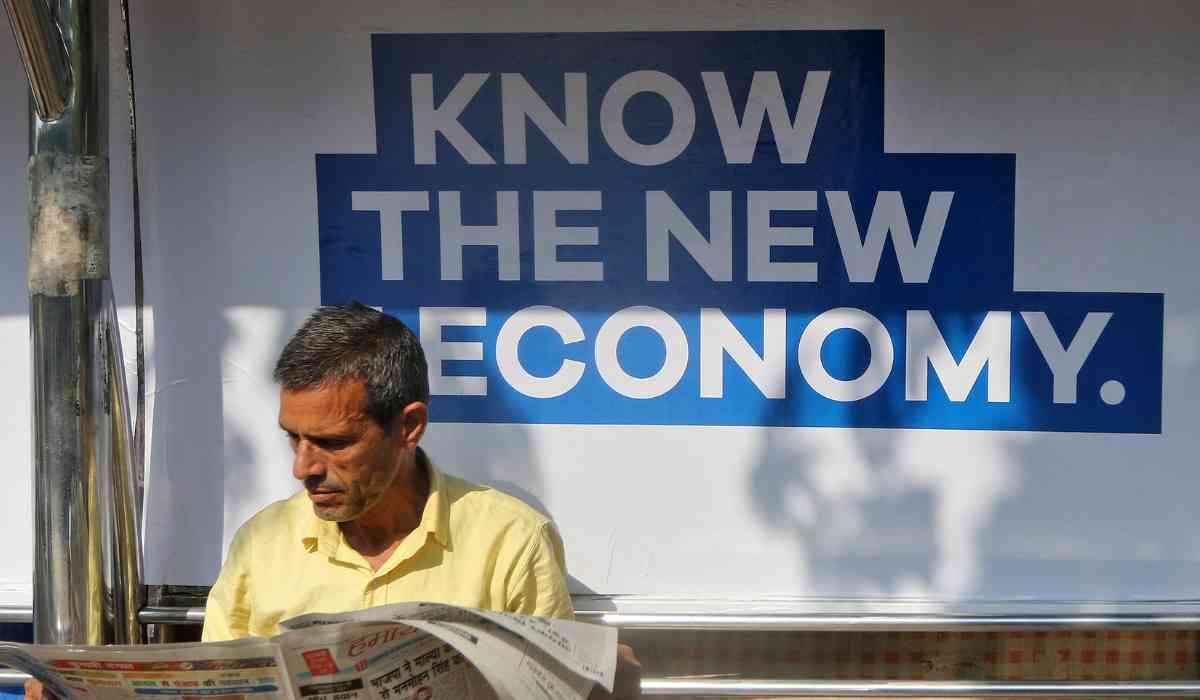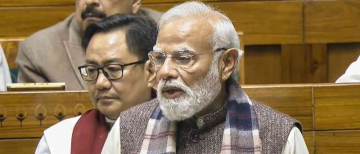India's economic growth forecast for the year ending March 2025 has been revised down to 6.4%, marking the slowest pace in four years and falling short of the government's initial projection of 6.5% to 7%. The slowdown has been primarily driven by a weaker manufacturing sector, slower corporate investments, and various other economic challenges faced throughout 2024. This latest estimate, provided by the National Statistics Office (NSO), follows a series of disappointing economic indicators, raising concerns over the sustainability of India's growth trajectory.
A Slower Economic Expansion

The government had initially anticipated a growth rate between 6.5% and 7% for the fiscal year 2024-25. However, the reality of the situation has been quite different. The latest figures indicate a moderation in growth, largely attributed to a weaker manufacturing performance and a sluggish recovery in corporate investments. High inflation, anaemic capital inflows, and a record trade deficit have also compounded the economic difficulties, casting doubt on the robustness of the country's growth outlook.
Several key economic indicators in the second half of 2024 have raised alarms. Notably, the Reserve Bank of India (RBI) lowered its growth forecast for the year ending March 2025 to 6.6%, down from an earlier projection of 7.2%. This adjustment followed India's weaker-than-expected GDP growth of 5.4% for the July-September quarter, marking its slowest pace in seven quarters. Aditi Nayar, Chief Economist at ICRA, indicated that growth may recover somewhat in the second half of the fiscal year, with a projected annual growth rate of 6.7%.
Nominal Growth and Budget Concerns
In nominal terms, which account for inflation, India's economy is expected to grow by 9.7% in 2024-25, down from the 10.5% estimate provided in the federal budget announced in February 2024. Despite the slowdown, private consumption—which constitutes nearly 58% of India's GDP—is projected to grow by 7.3% year-on-year, compared to just 4% in the previous fiscal year. The significant rise in consumption is expected to provide some support to overall economic growth.
However, private investment remains subdued, with a growth rate of just 6.4%, down from 9% the previous year. Government spending is expected to rise by 4.1% year-on-year, an improvement over the 2.5% increase in the prior fiscal year. Despite this, there are concerns that the slowdown in government spending earlier in the year could lead India to miss its budget deficit target of 4.9% for the current financial year.

Sectoral Growth and Challenges
India's economy is still experiencing growth in several sectors, but the momentum has slowed significantly compared to the previous year. The agriculture sector, which contributes approximately 15% of GDP and employs over 40% of the workforce, is expected to see a pick-up in growth. Farm output is projected to grow by 3.8% in 2024-25, a sharp increase from the 1.4% growth seen in the previous year, largely due to a favourable monsoon season.
The manufacturing sector, which contributes about 17% of GDP, is forecasted to expand at a much slower rate of 5.3% in the current fiscal year, compared to 9.9% in the previous year. The construction sector is expected to grow by 8.6%, also down from 9.9% in 2023-24. These sectoral slowdowns indicate that while certain areas of the economy are still expanding, they are not doing so at the same pace as before.
The National Statistics Office's advance estimates for 2024-25 remain subject to further revisions. Madhavi Arora, an economist at Emkay Global, has warned that the current growth projection of 6.4% may be overly optimistic. Arora highlighted the risks of downward pressure on the economy, primarily due to the weak pace of corporate investments, which could drag overall growth lower.
Inflation and its Impact on Demand
One of the key drivers of the current slowdown has been inflation, which has eroded the purchasing power of urban consumers. The Reserve Bank of India has pointed to inflation as a significant factor behind the weaker-than-expected growth. However, in a rare move, the government's latest monthly economic report suggested that the RBI's monetary policy stance and regulatory measures may have also contributed to the slowdown in demand.
The government report indicated that the growth outlook for the October to December period appears relatively brighter, as rural demand remains resilient, and urban demand has started to show signs of recovery. However, mixed indicators from corporate earnings paint a more complex picture. For instance, Dabur, one of India's largest consumer goods companies, reported only low single-digit revenue growth in the third quarter, primarily due to subdued demand for healthcare and beverage products. On the other hand, Titan, a leading jewellery and watch brand, reported robust demand, especially in the festive season.
Looking Ahead: Growth in 2025
While the 2024-25 growth forecast reflects a challenging year for the Indian economy, the outlook for the next financial year remains more positive, albeit with some uncertainty. ICRA's Nayar projects a GDP growth of 6.5% for the year beginning April 1, 2025, driven by global and domestic factors. However, given the ongoing economic challenges, including potential global uncertainties and domestic structural issues, this forecast is subject to change.
The path forward for India will depend heavily on several factors, including global economic conditions, the pace of corporate investments, and the ability of government policies to address inflation and stimulate demand. The forecast of 6.4% growth in 2024-25 reflects both the current challenges and the resilience of the Indian economy in the face of adversity.
India's growth forecast for 2024-25, pegged at 6.4%, signals a marked slowdown from the previous years and raises concerns about the sustainability of the country's economic momentum. With weaker-than-expected manufacturing performance, slower corporate investments, and inflationary pressures, the country faces a tough economic environment. While there are some areas of growth, such as agriculture and private consumption, the overall outlook remains uncertain. How India navigates these challenges will be critical in determining its growth prospects for 2025 and beyond.
With inputs from reuters
Image Source: Multiple agencies
© Copyright 2024. All Rights Reserved Powered by Vygr Media.






















